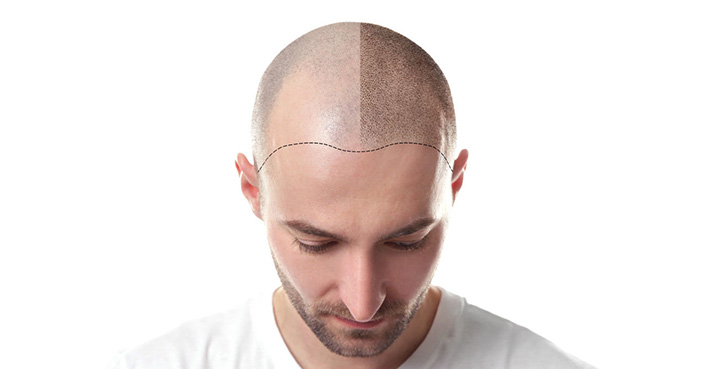
Hair transplantation
18 Dec 2020Hair transplantation involves moving hair to an area with thin or no hair from an area of the body with hair. It is done by taking hair from the scalp or any other part of the body and grafting it to the scalp where hair is scarce. It is effective in the case of people who are balding or thinning naturally or have hair loss due to injury. In general, 80% of the transplanted hair grows back fully. Transplantation can involve one or more sessions and each session can take between 4 and 8 hours.
Healthy hair follicles are transferred from the back and sides of the head to the crown and front of the head where hair loss is seen. Hair grows in clusters on the scalp. These clusters contain 1-3 follicles. Micro dissection follicular unit preserves these clusters in graft form. In micrografting, hair grafts are removed from the fringe of hair around the back of the head and inserted to the recipient area. The popular types of hair transplantation are Follicular Unit Extraction (FUE) and Follicular Unit Transplantation (FUT).
Both men and women can undergo hair transplants. While transplantation can be done at any age, it is generally recommended for people between 25 and 65 years. Hair transplant is not recommended for people below the age of 25 as they might be still experiencing premature hair loss. A person’s scalp should have sufficient healthy hair that can be transplanted to the area that requires hair in addition to the ability to grow hair in the thinning area of the scalp whose hair can be harvested for transplantation.
There are several advantages of going in for hair transplantation. Among them are:
- High likelihood of growth in healthy hair in balding areas.
- Since there is an improvement in a person’s appearance, confidence level goes up.
- Results are normally long lasting.
- Maintenance is low and there is cost savings as a result of that.
- Transplanted hair does not require any specialized treatment.
FUE TECHNIQUE and its advantages over FUT
In the case of FUE method of hair transplantation, individual follicular units (1-4 hairs) are removed under local anesthesia using tiny punches of 0.6 mm to 1 mm in diameter. The doctor then uses micro blades to puncture the site receiving the grafts placing them in a predetermined density and pattern.
FUT is a more traditional method of hair transplantation and involves the extraction of a linear strip of hair bearing skin which is dissected in to smaller grafts individually. A 6 to 10 inches strip of skin is divided in to 500 – 2000 tiny grafts. Area around the scalp where the skin was removed is stitched. The surgical sites are covered with gazes or bandages. FUT is shorter and costs less than FUE. The hair is grafted in to the puncture holes pretty much like the FUE method.
FUE takes more time than strip surgery but looks natural and gives better results. Scars are not visible and pain/discomfort is minimized. There is no need for sutures and recovery is around 1-2 days. There is no need for repeat visits to remove sutures. Short hair styling can be done in case of FUE. It is a better method for small bald patches.
Post-operative care
Once the procedure is completed, one can leave after a few hours. There may be swelling and the scalp may be very tender. Pain medication is normally prescribed for a few days. The scalp will be bandaged for a day or two and antibiotics and anti-inflammatory drugs will also be prescribed. These drugs are prescribed to minimize the risk of infection, bleeding, scarring and numbness. Most people will see new hair growth between 6 to 9 months after the surgery.
After 2 to 3 weeks, transplanted hair will fall due to the shock loss of hair caused by the procedure. There are several precautions that needs to be taken including protecting the hair from direct sunlight, using a mild shampoo, getting back to work only after 3 to 4 days, not brushing or combing down over the new grafts for 3 weeks and avoiding the use of a hat or pullovers. Exercise may also be avoided for a week. Hair should not be lugged or pulled. Keeping the head and neck elevated while sleeping is also recommended.
You can consult Dr Revanta Saha, Dermatologist, Hair Transplant Surgeon and Cosmetologist at Dr. Derm Speciality Skin and Cosmetology Clinic in case you are considering hair transplantation. Dr Saha is a specialist in hair transplantation and has performed several successful hair transplantation procedures. Patients from Indiranagar, Marathahalli, Domlur and Jeevan Bhima Nagar can easily access his clinic and consult with him for hair transplantation.